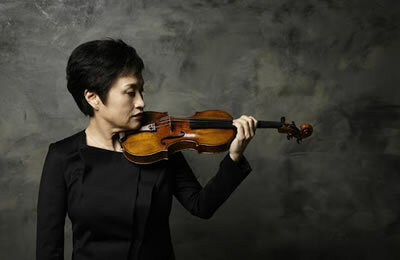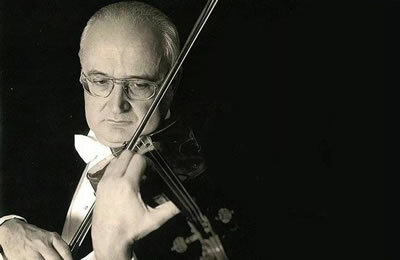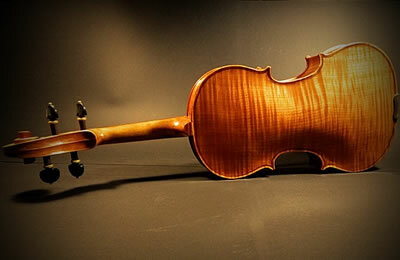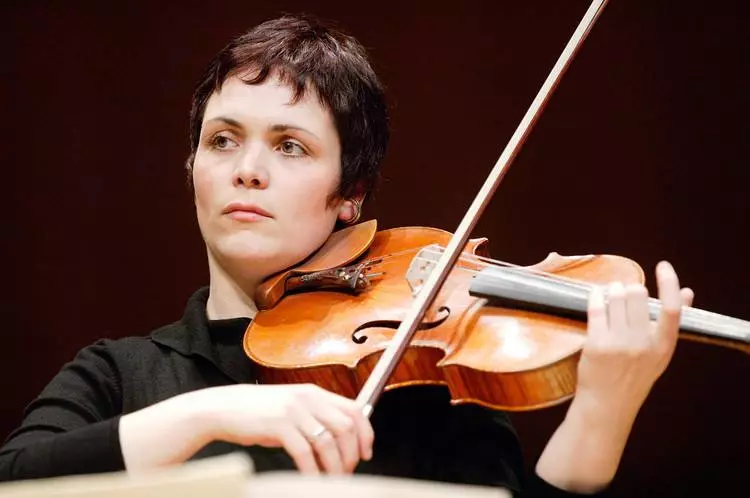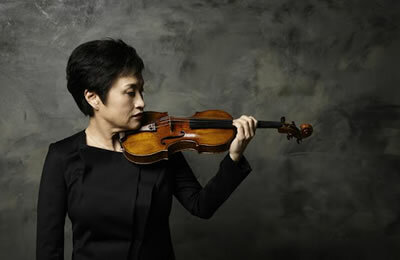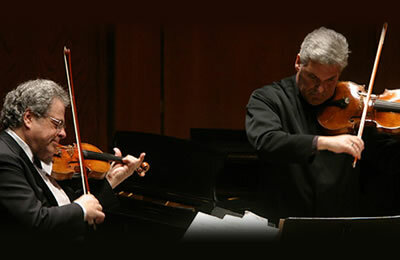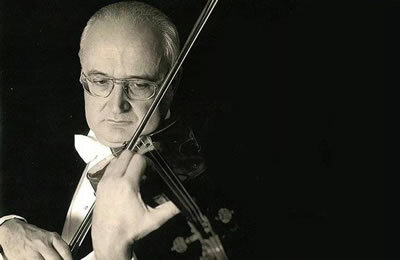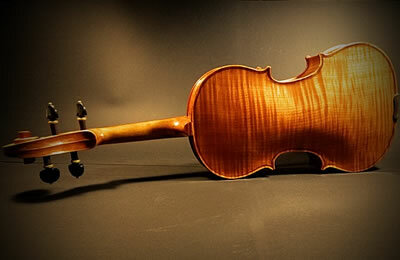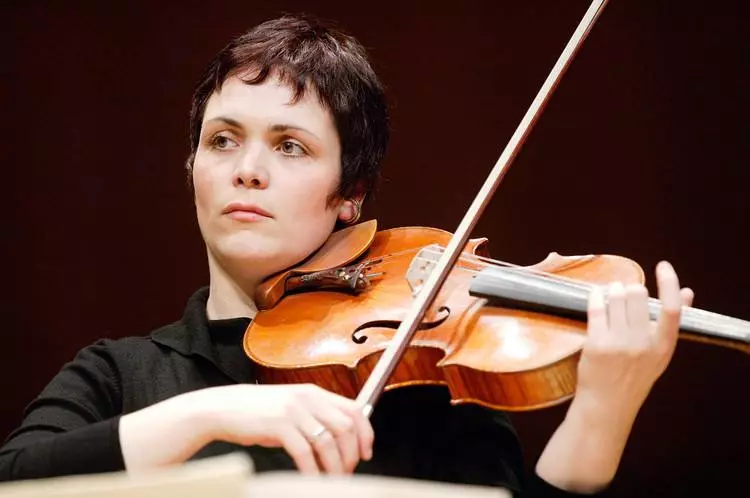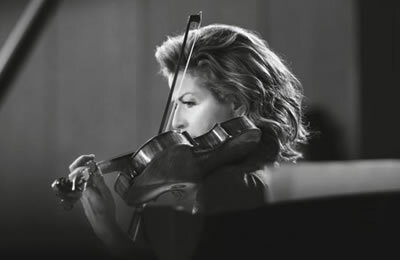1. Practicing scales is the basis for fixing intonation.
We say that we should practice scales every day, and the purpose is to get every note right. For most violin lovers and beginners, what they like to practice and play the most are those touching and perfect melodies, and the least like to practice is probably the dull scales.
In fact, insisting on practicing scales is the easiest and most direct way to establish and consolidate the abstract position of the inner pitch. In many cases, stepped or partial occurrences of scales can appear as melody in violin pieces. In all violin works, those brilliant fast passages and difficult cadenzas are combinations of various scales.
At the same time, the scale can also establish the frame of the hand and better establish the touch of the fingers. The great violinist Heifetz said: "The basis of violin playing technique is scale, which is the most important aspect of violin playing technique." It can be seen that practicing scales, as the most important basic practice for violin players, must be done Daily practice and serious treatment will be of great help in solving all aspects of the violin, especially the intonation problem. Below I take the specific method of practicing monophonic scales as an example:
When we practice a single scale, we must first figure out what key it is, which is relatively mentally retarded, but it must be paid attention to. The first note at the beginning of each series of scales must be extremely precise. Otherwise, pulling and pulling all the sounds will not be in their proper positions.
It is often a joke: after playing a G major scale, the last note and the G string are matched, and you will find that there is a big difference. (Have friends who have played the violin ever had such an experience? )
This is that when we play the piano, the sound is gradually inaccurate. Gradually, all the notes deviate from the normal track, but our ears can't feel it. Therefore, when we play a series of scales, we need to be accurate except for the first one. When the note is drawn, when you pull the same note as the open string, you must subconsciously match the open string. (In fact, not only the note that is the same as the open string has a reference tone, but all other notes can pass 5 degrees, 3 degrees and 6 degrees to adjust your own intonation)
In a string of notes, all the notes that can correspond to the empty strings are all accurate, and our framework for the pitch of this string of notes has a guarantee, at least the above problems will not appear again~ Every practice At the same time, the sound of each note must be very accurate, and our ears must supervise our hands, otherwise, the mistake will be repeated 100 times, and it will never be correct!
2. Use hearing to guide pitch
For students who have no problems with hearing, the fundamental reason for the inaccurate pitch is that they do not use their ears to carefully identify whether the tones they are playing are correct or not when they practice the piano, and they do not correct those inaccurate tones and just let it go. Hearing did not play the role of guidance and supervision. After a long time like this, you will get used to the sound that is not drawn correctly. They will also mistakenly think that the sound they pull out is correct, so that the inaccurate sound can never be corrected.
The correct way is: when practicing the piano every day, you should use your hearing to check the intonation. If you encounter an inaccurate tone, you should correct it in time, and don't let it go.
Facts have proved that the better the work of correcting the pitch is done, the greater the assurance that the pitch is pressed at one time when the official performance is performed. In pitch adjustment, we must have the courage to give up the wrong position of the fingers when pressing the strings, and be diligent in finding the most accurate position. Don't assume that the position you press the first time must be accurate. If you are not sure about the pitch of a certain sound, you must practice repeatedly, compare and adjust repeatedly, until you get the sound right. Doing so not only corrects the pitch and gets the finger-feel of getting the pitch right at once, but also sharpens the hearing. And sharp hearing, in turn, helps us correct pitch more quickly, creating a virtuous cycle of pitch.
Students with less sensitive hearing will have to work harder to do so. If necessary, you can ask a solfeggio teacher for guidance and do some special training in hearing to improve your hearing ability. Once the pitch is in place, you will gradually become familiar with the correct position of the pitch on the fretboard. After a long time, you will be able to press the pitch at one time, and at the same time, you can develop a good pitch habit. And once a good habit of intonation is formed, it is not easy to keep the pitch inaccurate.
3. Establish correct left hand posture
In addition to using your hearing, it is important to establish and maintain a correct hand shape for quick and accurate intonation on the fretboard. The famous violin educator Galamian pointed out: "Good intonation is mainly based on the feeling of the touch finger guided by the ear." He proposed two effective trainings, "the frame of the hand" and the "principle of double contact". method.
The so-called "frame of the hand" refers to: in any position, the four fingers of the left hand should try to maintain an accurate pure fourth relationship between one and four fingers; when playing two tones, try to maintain an accurate one to four fingers. pure octave relationship. Its purpose is to find the exact position of the second and third fingers by stabilizing the first and fourth fingers. The "principle of double contact" means: in addition to finger pressing, in the low position, the sides of the thumb and index finger of the left hand touch both sides of the neck in a relaxed state; in the fourth position or above, the forefinger side With the edge off the neck, different positions of the thumb and hand touch the body, insisting that there are two points touching the violin at the same time.
Its purpose is to establish the feel of the left hand in each position of the violin; to ensure the strength of the fingers to press the strings. In this exercise, we must pay attention to the relaxation of different parts of the thumb and hand, and do not let these two points force each other, which is usually what we often say "don't pinch the piano!"
4. Pay attention to the learning of solfeggio
Many teachers ask beginners to mark the exact position of their fingers on the neck to replace the not yet formed auditory concept. However, extremes fail. Through this kind of marking practice, although beginners have mastered the correct left-hand posture, they have become dependent on the markings on the neck. Once the markers are removed, or if they play a different violin, the hand shape seems correct, but the intonation problem still won't be solved. This problem arises because they have given up the function of their ears, that is, they are playing the violin as if they were deaf and have no response to the pitch of the violin.
In my opinion, 'the violinist's ear' is like 'the pilot's eyes', a pilot who has a problem with his eyes cannot fly a plane; similarly, a violin player who has a problem with his ears cannot play well Violin! Many people think that the ear cannot distinguish intonation when playing the violin because it does not have 'inner musical hearing'. The so-called 'inner musical hearing', "Music Encyclopedia" explains as follows: "People's inner memory or imagination of some kind of heard or unheard music. Compared with listening to the actual music performance. But inner musical hearing It is formed on the basis of the rich experience of listening to music. Most people have different levels of inner music hearing ability, which can be gradually improved after shallow to deep training, and some people will achieve certain development.” It can be seen that at this time, The intonation problem that occurs can be improved through training.
The occurrence of such a problem is directly related to the basic subject of music – the training of solfeggio. Why is it related to the training of solfeggio? At present, the teaching methods for violin beginners in my country are mainly divided into: training classes, children's palaces, and small violin lessons. Most of the teaching focuses are on the technical aspects of the violin, while The education of the fundamental disciplines of music is neglected. Under this teaching method, there are many violin beginners who have studied for a long time, but do not know how to sing notation, but only look at the fingerings and bows marked on the notation. In their minds, they only know how many strings each note is on, but they don't know what the note sings.
In this case, it is obviously impossible for him to judge the accuracy of the sound. How to solve this problem? In addition to participating in the basic learning of solfeggio, you can also have targeted training while practicing the violin. For violin lovers, the first thing to be clear is that the purpose of learning and practicing the violin is not to improve the technical ability of the fingers, but to learn and feel the music.
The violin is just a tool for expressing music, and it is music that moves people in the end. Music – we can understand it in a popular way: the sound that makes people happy is music! Then, we must first understand the sound, that is, singing. From then on, develop a good habit – as long as you start to play the piano, you must sing in your heart; if you sing a lot, your heart will form an abstract image of notes, and each note will have a fixed position in your heart. When the note you play does not reach this position, the pitch heard by the ear does not overlap with the abstract position of the pitch estimated in advance by the heart – or above this abstract position, or below this abstract position, Practitioners can also judge whether the sound is accurate. We call this ability 'inner musical hearing'. Therefore, the training of solfeggio is extremely important for violin learners.
5. Correct vibrato is the key to intonation.
The basic intonation problem in primary violin performance can be solved by practicing the above three aspects. However, after learning and basically mastering the vibrato technique, some players will have the problem of unstable intonation or even a high pitch when vibrating the vibrato.
Generally, there are three types of vibrato: wrist vibrato; arm vibrato; finger vibrato. These three vibrato methods and sound effects are not the same. Wrist kneading, relying on the shaking of the wrist to drive the finger joints; arm kneading, relying on the shaking of the arm to drive the finger joints; finger kneading, relying on the finger joints to vibrate.
The three kinds of vibrato are ultimately completed by the vibration of the finger joints, and the difference lies in the different timbres obtained by the three vibrato methods. After using the vibrato, many people tend not to consider the needs of the overall performance of the music, and just want the beauty of each sound rather than the beauty of a reasonable sentence, so they just rub the vibrato blindly, without considering the skills of the right hand or whether or not Zhou, this will not only fail to make a good sound, but will cover up the shortcomings of the right hand or create shortcomings. You must seriously consider all the skills of the right hand, use the bow speed and bow pressure reasonably, and calmly consider what kind of bow speed and bow pressure should be increased. What kind of vibrato is used to get a good sound.
After my own study and teaching, I think the problem of intonation caused by kneading is mainly in the following aspects: First, the movement direction of finger joints. Many beginners do not pay attention to which finger joints go first when they first practice kneading. The correct way to knead in the direction is to press the fingers at the exact pitch position, and move the knuckles towards the headstock first, so that the first joints of the fingers are flattened from vertical.
If it is started in the direction of the bridge first, it will cause the problem of higher and higher rubbing. The second is that the starting direction of the vibrato is correct, but if the finger joints shake too fast and too large, the vibrating intonation will be unstable. Pay attention to the speed and amplitude of the vibrato, and this problem can be solved. The third is that the fingers are tense when pressing the strings, causing the finger joints to be too hard, which will also cause the problem of intonation instability. 4. The "double contact principle" cannot be used in the left-hand posture. It is enough to rely on one pointing of the left thumb, otherwise it will affect the direction and speed of the vibrato, as well as the relaxation of the knuckles, thus affecting the pitch of the vibrato.
音樂就是思想著的聲音。
Music is the sound of thinking.
